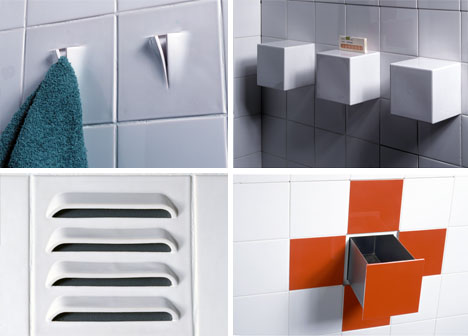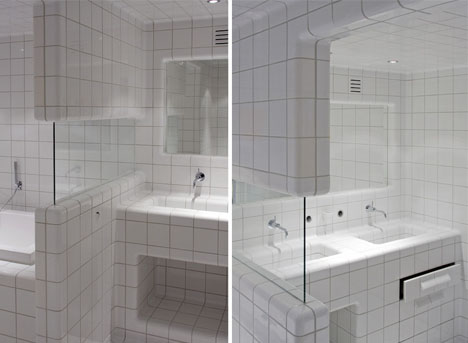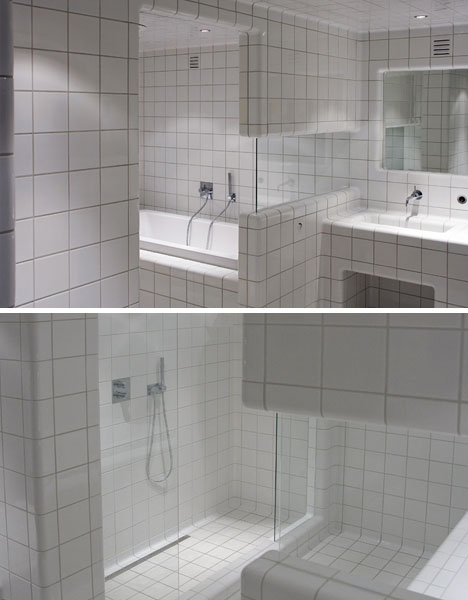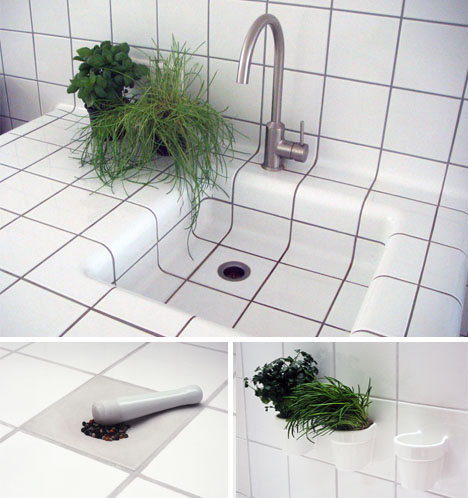A module is only as good as the potential system it can plug into. It is easy to be enamored with a design outside of context and use, but far more impressive, in many cases, is the total puzzle into which that single piece fits.
Regular readers will recall these ingenious one-off ‘function tiles’ from a
previous article on
dtile, but the design behind them goes beyond single-use additions of useful and crafty modules as this broader interior – landscaped with wrap-around tile on all sides – shows off in three-dimensional curves covering a complete space, arcing to meet bathroom or kitchen ceilings and floors as well.
Within this room, grid-fitting additions are included
“to address the practical needs of living spaces … integrating necessary functionalities directly into tiles, some of which are three-dimensional. Hooks, outlets, shelves, drawers, gaskets, control dials, plugs, and ventsare just some of the many varieties of ‘functional tiles’ available. Entire sinks, showers, and bathtubs are formedfrom simply assembling the requisite component pieces.” Suddenly, the meaning of these singular tiles is transformed – they are no longer add-ons to an existing space, but part of the material palette of construction from day one. They are, in effect, building materials rather than afterthought accessories.
Curved sinks fluidly emerge from their surrounding surfaces, as if pressed and molded into position from one continuous flat canvass. In other cases, the added functions are quite direct and explicit – tiles with small suspended plant pots, for example, that nestle into walls. Installation might be trickier in some sense (particularly those curved wall-to-wall and wall-to-ceiling intersections), but in other ways the entire process is made much simpler – the grid informs the possible shapes, locations and sizes of individual parts and pieces, a kind of semi-rigid line set in which one can fill in gaps and details.








Δεν υπάρχουν σχόλια:
Δημοσίευση σχολίου